Contents
- Kingdom of Armenia
- Ancient Armenian queens
- Bagratuni dynasty, 862–1045
- Armenian Kingdom of Cilicia
- Princess consort of Armenia, Lady of the Mountains
- Queen consort of Armenia
- See also
- Notes


This is a list of Armenian royal consorts.


This is a list of Armenian royal consorts.
| Picture | Name | Father | Birth | Marriage | Became Queen | Ceased to be Queen | Death | Spouse |
|---|---|---|---|---|---|---|---|---|
| Katranide I | - | 825 | - | 862 husband's appointment as Prince of Princes 26 August 884 husband's coronation as King | 890 husband's death | - | Ashot I | |
| The name of Smbat I's wife is not known. She was captured in the fortress of Kars in 895 by the ostikan Afshin, but was released when her son Ashot II was given as hostage and her husband agreed to marry his niece to Afshin. | Smbat I | |||||||
| Sahakanuysh Sevada | - | - | - | 914 husband's accession | 928 husband's death | - | Ashot II | |
| The name of Abas I's wife is not known. They had five known children. | Abas I | |||||||
| Khosrovanuysh | - | - | 953 | 877 husband's death | - | Ashot III | ||
| The name of Smbat II's wife is not known. Said to be his niece. | Smbat II | |||||||
| Katranide II | Syuni | - | - | 989 husband's accession | 1020 husband's death | - | Gagik I | |
| The name of Abas I's first wife is not known. She was mother of his only son, Erkat. | Hovhannes-Smbat III | |||||||
| Argyra | a brother of Romanos III Argyros (Argyroi) | - | 1032 | 1040 husband's death | - | |||
| The name of Ashot IV's wife is not known. They had two known children. | Ashot IV | |||||||
| ? of Vaspurakan | Dawid of Vaspurakan, Lord of Siwas | - | - | 1042 husband's accession | 1045 husband's desposition | - | Gagik II | |
| Picture | Name | Father | Birth | Marriage | Became Princess | Ceased to be Princess | Death | Spouse |
|---|---|---|---|---|---|---|---|---|
| The name of Ruben I's wife is not known. Mother to Constantine I. | Ruben I | |||||||
| Phokaina | a grandchild of Bardas Phokas (Phokas) | - | - | 1095 husband's accession | 1100/24 February 1102/23 February 1103 husband's death | - | Constantine I | |
| The name of Thoros I's wife is not known. They had two children. | Thoros I | |||||||
| unnamed | possibly of Hugh I of Rethel or Gabriel of Melitene | - | 1100/03 | 1129 husband's accession | Leo I | |||
| The name of Leo I's second wife is not known. They had no children. | ||||||||
| Isabelle de Courtenay | Joscelin II, Count of Edessa (Courtenay) | after 1133 | 1149 | 1150/59 | Thoros II | |||
| unnamed | Simon of Raban | |||||||
| unnamed | Thomas the Regent (Rubenids) | - | 1164 | 1169 husband's abdication | - | |||
| unnamed | Vasil of Gargar | - | - | 1170 husband's accession | 15 May 1175 husband's death | - | Mleh I | |
| Isabelle of Toron | Humphrey III of Toron | - | 4 February 1181/3 February 1182 | 1187 husband's abdication | - | Ruben III | ||
| Isabelle of Antioch | a brother of Sibylle, the wife of Bohemond III of Antioch | - | 3 February 1188/4 February 1189 | 6 January 1198/1199 became Queen | 1207 | Leo II | ||
| Picture | Name | Father | Birth | Marriage | Became Queen | Ceased to be Queen | Death | Spouse |
|---|---|---|---|---|---|---|---|---|
| Isabelle | a niece of Sibylle, the wife of Bohemond III of Antioch | - | 3 February 1188 – 4 February 1189 | 6 January 1198/1199 became Queen | 1206 divorce | 1207 | Leo I | |
| Sibylla of Lusignan | Amalric II of Jerusalem (Lusignan) | October–November 1198/1199/1200 | 28 January 1210/27 January 1211 | May, 1219 husband's abdication | after 1225 or 1230 or 1252 | |||
| Philip of Antioch | Bohemond IV of Antioch (Ramnulfids) | - | 25 January 1221/24 January 1222 | 1225/26 | Isabella | |||
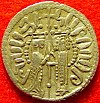 | Hethum I | Constantine of Baberon (Hethumids) | 1215 | 14 June 1226 | 23 January 1252 wife's death and his own accession | 28 October 1270 | ||
| Picture | Name | Father | Birth | Marriage | Became Queen | Ceased to be Queen | Death | Spouse |
|---|---|---|---|---|---|---|---|---|
 | Anna of Lampron | Prince Hethum IV of Lampron (Hethumids) | - | early 15 January 1262/14 January 1263 | early 1269 husband's accession | 28 July 1285 | Leo II | |
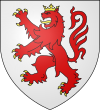 | Margaret of Lusignan | Hugh III of Cyprus (Lusignan) | 1276 | 9 January 1288 | 1293 husband's accession | 1296 | Thoros III | |
 | a Mongol princess | Ghazan or another relative (Borjigids) | - | 1297 | 23 July 1298 husband's death | - | ||
| 1298 husband's death | Sempad | |||||||
 | Agnes-Marie of Lusignan | Amalric, Lord of Tyre (Lusignan) | - | 1305/06 | 17 November 1307 husband's death | after 10 October 1309 | Leo III | |
| Isabelle of Korikos | Hetoum of Korikos (Hethumids) | - | - | 17 November 1307 husband's accession | 3 April 1310 | Oshin | ||
 | Isabelle of Lusignan | Hugh III of Cyprus (Lusignan) | 1280 | 1310 | before 1316 divorce | 1319 | ||
 | Joan of Anjou | Philip I, Prince of Taranto (Anjou-Taranto) | 1297 | February 1316 | 20 July 1320 husband's death | 1317 or March 1323 | ||
| Alice of Korikos | Oshin of Korikos (Hethumids) | - | 10 August 1321 | 1329 | Leo IV | |||
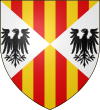 | Constance of Sicily | Frederick III of Sicily (Barcelona) | 1307 | 29 December 1331 | 28 August 1341 husband's death | after 19 June 1344 | ||
| Picture | Name | Father | Birth | Marriage | Became Queen | Ceased to be Queen | Death | Spouse |
|---|---|---|---|---|---|---|---|---|
| Theodora Syrgiannaina | sister of Syrgiannes Palaiologos Philanthropenos | - | 1330–1332 | 1342 husband's accession | 17 April 1344 husband's death | 30 June 1347/1349 | Constantine II | |
| Marie of Korikos | Oshin of Korikos (Hethumids) | 1321 | 1340 | 17 April 1344 husband's accession | 21 December 1362 husband's death | 1377/1405 | Constantine III | |
| 1369 | April 1373 husband's death | Constantine IV | ||||||
| Margaret of Soissons | John of Soissons | - | May 1369 | April 1373 husband's accession | 1375 husband's surrender to the Mameluks | 1379-4 July 1381 | Leo V | |
This article concerns the period 69 BC – 60 BC.
Laodice may refer to:
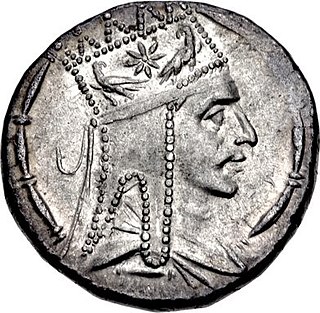
Tigranes II, more commonly known as Tigranes the Great was the king of Armenia. A member of the Artaxiad dynasty, he ruled from 95 BC to 55 BC. Under his reign, the Armenian kingdom expanded beyond its traditional boundaries and reached its peak, allowing Tigranes to claim the title Great King or King of Kings. His empire for a short time was the most powerful state to the east of the Roman Republic.
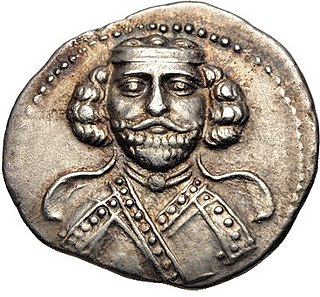
Phraates III, was King of Kings of the Parthian Empire from 69 BC to 57 BC. He was the son and successor of Sinatruces.

Gotarzes I was king of the Parthian Empire from 91 BC to 87 or 80 BC. He was the son and successor of Mithridates II, and was succeeded by his son Orodes I.

The Third Mithridatic War, the last and longest of the three Mithridatic Wars, was fought between Mithridates VI of Pontus and the Roman Republic. Both sides were joined by a great number of allies dragging the entire east of the Mediterranean and large parts of Asia into the war. The conflict ended in defeat for Mithridates, ending the Pontic Kingdom, ending the Seleucid Empire, and also resulting in the Kingdom of Armenia becoming an allied client state of Rome.
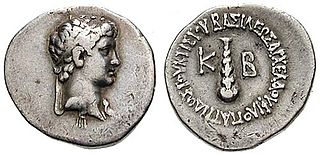
Archelaus was a Roman client prince and the last king of Cappadocia. He was also husband of Pythodorida, Queen regnant of Pontus.
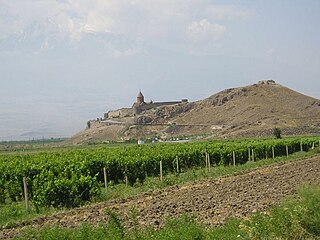
The Battle of Artaxata was fought near the Arsanias River in 68 BC between an army of the Roman Republic and the army of the Kingdom of Armenia. The Romans were led by proconsul Lucius Licinius Lucullus, while the Armenians were led by Tigranes II of Armenia, who was sheltering Mithridates VI of Pontus. The battle was part of the Third Mithridatic War, and was a Roman victory.
Cleopatra of Pontus was a Pontian princess and a queen consort of Armenia.
The Orontid dynasty, also known as the Eruandids or Eruandunis, ruled the Satrapy of Armenia until 330 BC and the Kingdom of Armenia from 321 BC to 200 BC. The Orontids ruled first as client kings or satraps of the Achaemenid Empire and after the collapse of the Achaemenid Empire established an independent kingdom. Later, a branch of the Orontids ruled as kings of Sophene and Commagene. They are the first of the three royal dynasties that successively ruled the antiquity-era Kingdom of Armenia.

Contacts between the Italian peninsula and the Armenian Highland go back to the Iron Age when the Etruscan civilization traded with the Kingdom of Urartu by way of Phrygia and Ancient Greece. Urartian bronzes; bull-headed cauldrons and pottery were excavated in various parts of Etruscan Italy, particularly in Tuscany. The Roman Republic played a pivotal role in the re-establishment of the Kingdom of Armenia in 189 BC. Antiochus III the Great was defeated at the Battle of Magnesia by the Romans which in turn allowed the Armenian strategoi of Antiochus, Artaxias and Zariadres to take control of an independent Armenian Kingdom. The Romans perceiving themselves as the legitimate successors of the Seleucids began to play a more aggressive role in the affairs of the Hellenistic world of Asia Minor starting with the acquisition of Pergamum in 133 BC. The Third Mithridatic War led Roman forces for the first time directly to the Armenian border. From that point on until the demise of the Kingdom of Armenia in 428, Rome played a significant role in the affairs of Armenia and Armenians. This article explores the history of that relationship, a relationship which alternated between harmony and conflict.

Pontus was a Hellenistic kingdom centered in the historical region of Pontus and ruled by the Mithridatic dynasty, which possibly may have been directly related to Darius the Great of the Achaemenid dynasty. The kingdom was proclaimed by Mithridates I in 281 BC and lasted until its conquest by the Roman Republic in 63 BC. The Kingdom of Pontus reached its largest extent under Mithridates VI the Great, who conquered Colchis, Cappadocia, Bithynia, the Greek colonies of the Tauric Chersonesos, and for a brief time the Roman province of Asia. After a long struggle with Rome in the Mithridatic Wars, Pontus was defeated. The western part of it was incorporated into the Roman Republic as the province Bithynia et Pontus; the eastern half survived as a client kingdom until 62 AD.

Tigranes IV was a Prince of the Kingdom of Armenia and member of the Artaxiad Dynasty who served as a Roman Client King of Armenia from 8 BC until 5 BC and 2 BC until 1 AD.

Mithridates or Mithradates VI Eupator was ruler of the Kingdom of Pontus in northern Anatolia from 120 to 63 BC, and one of the Roman Republic's most formidable and determined opponents. He was an effective, ambitious and ruthless ruler who sought to dominate Asia Minor and the Black Sea region, waging several hard-fought but ultimately unsuccessful wars to break Roman dominion over Asia and the Hellenic world. He has been called the greatest ruler of the Kingdom of Pontus. He cultivated an immunity to poisons by regularly ingesting sub-lethal doses; this practice, now called mithridatism, is named after him. After his death, he became known as Mithridates the Great.

Cappadocia was a province of the Roman Empire in Anatolia, with its capital at Caesarea. It was established in 17 AD by the Emperor Tiberius, following the death of Cappadocia's last king, Archelaus.
Mithridates I of Media Atropatene, sometimes known as Mithridates I and Mithridates of Media was a King of Media Atropatene.
Archelaus was a Cappadocian prince and a Roman client king of Cilicia Trachea and Eastern Lycaonia. He is sometimes called Archelaus Minor and Archelaus II to distinguish him from his father Archelaus of Cappadocia.
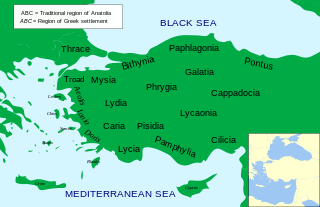
Classical Anatolia is Anatolia during Classical Antiquity. Early in that period, Anatolia was divided into several Iron Age kingdoms, most notably Lydia in the west, Phrygia in the center and Urartu in the east. Anatolia fell under Achaemenid Persian rule c. 550 BC. In the aftermath of the Greco-Persian Wars, all of Anatolia remained under Persian control except for the Aegean coast, which was incorporated in the Delian League in the 470s BC. Alexander the Great finally wrested control of the whole region from Persia in the 330s BC. After Alexander's death, his conquests were split amongst several of his trusted generals, but were under constant threat of invasion from both the Gauls and other powerful rulers in Pergamon, Pontus, and Egypt.

Tigranes the Younger was an Artaxiad prince, who briefly ruled the Kingdom of Sophene in 65 BC.